-

-
From the Très Riches Heures to the Master of Spencer 6
A Century of Illumination in Bourges
-
The Most Distinguished of Relics
The Crown of Thorns and the Crown of France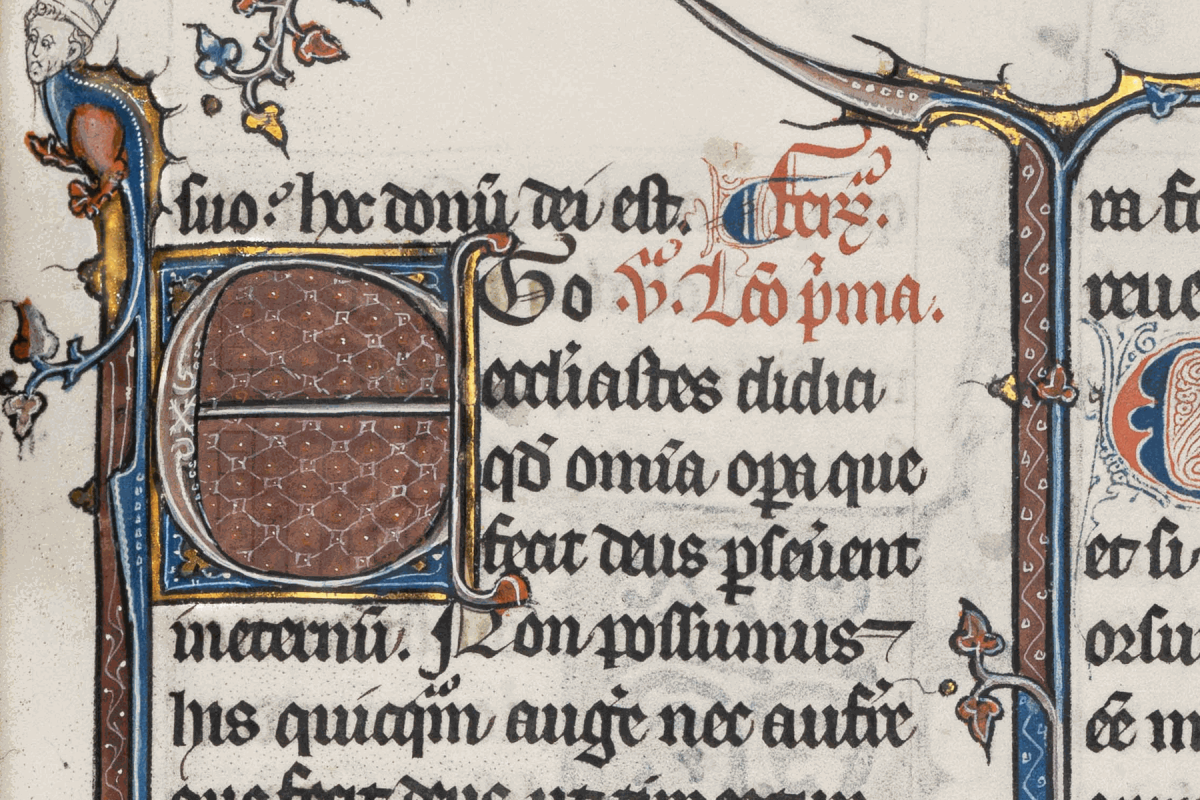 One of the most fascinating aspects of researching our manuscripts is discovering the many secrets hidden within their pages, just waiting to be found by the keen observer. While inspecting one of the finest examples of early French Gothic illumination in our collection, a Breviary made for Étienne Bécquart (1292-1307) the Archbishop of Sens, we realised that it contained a text and an image of the utmost rarity.
One of the most fascinating aspects of researching our manuscripts is discovering the many secrets hidden within their pages, just waiting to be found by the keen observer. While inspecting one of the finest examples of early French Gothic illumination in our collection, a Breviary made for Étienne Bécquart (1292-1307) the Archbishop of Sens, we realised that it contained a text and an image of the utmost rarity. -
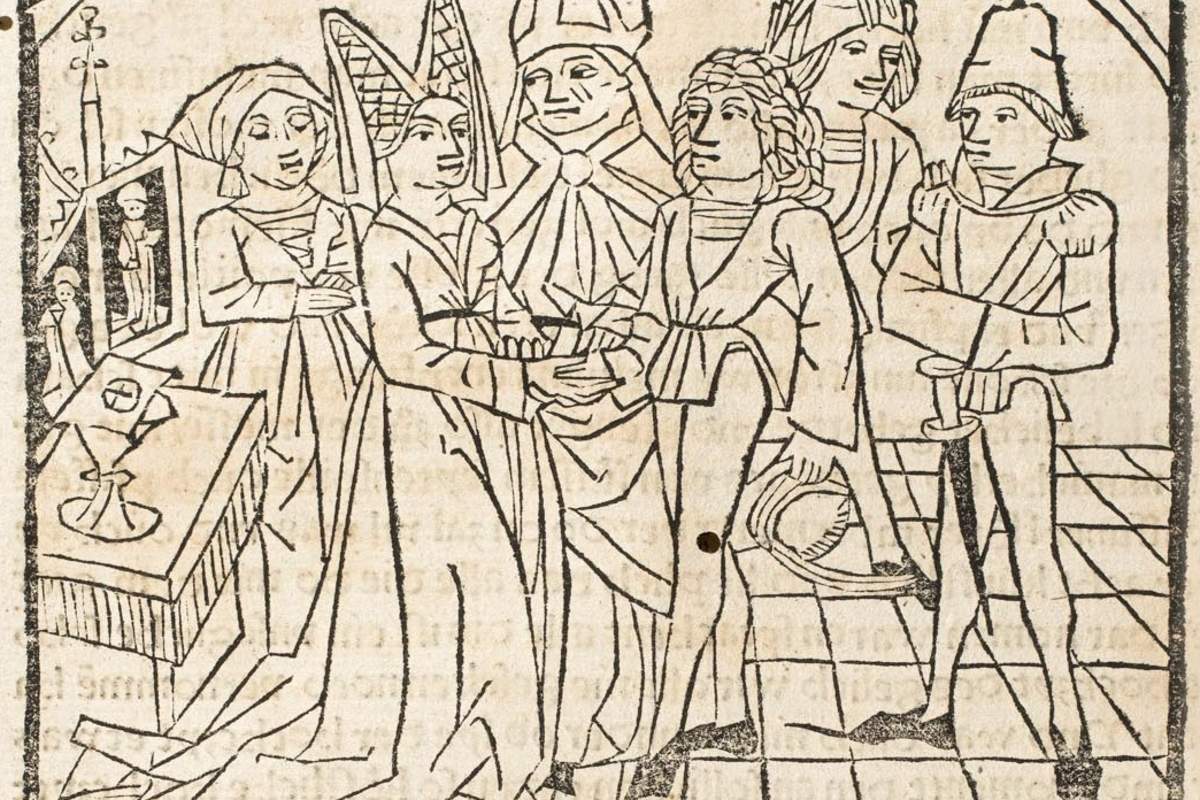
What have Alexander the Great, the mermaid Melusine, and Lucifer’s lawyer in common? Their fascinating stories can all be found in this brilliant Sammelband (a collection of multiple works), bringing together 6 of the most popular German literary texts of the late Middle Ages.
-
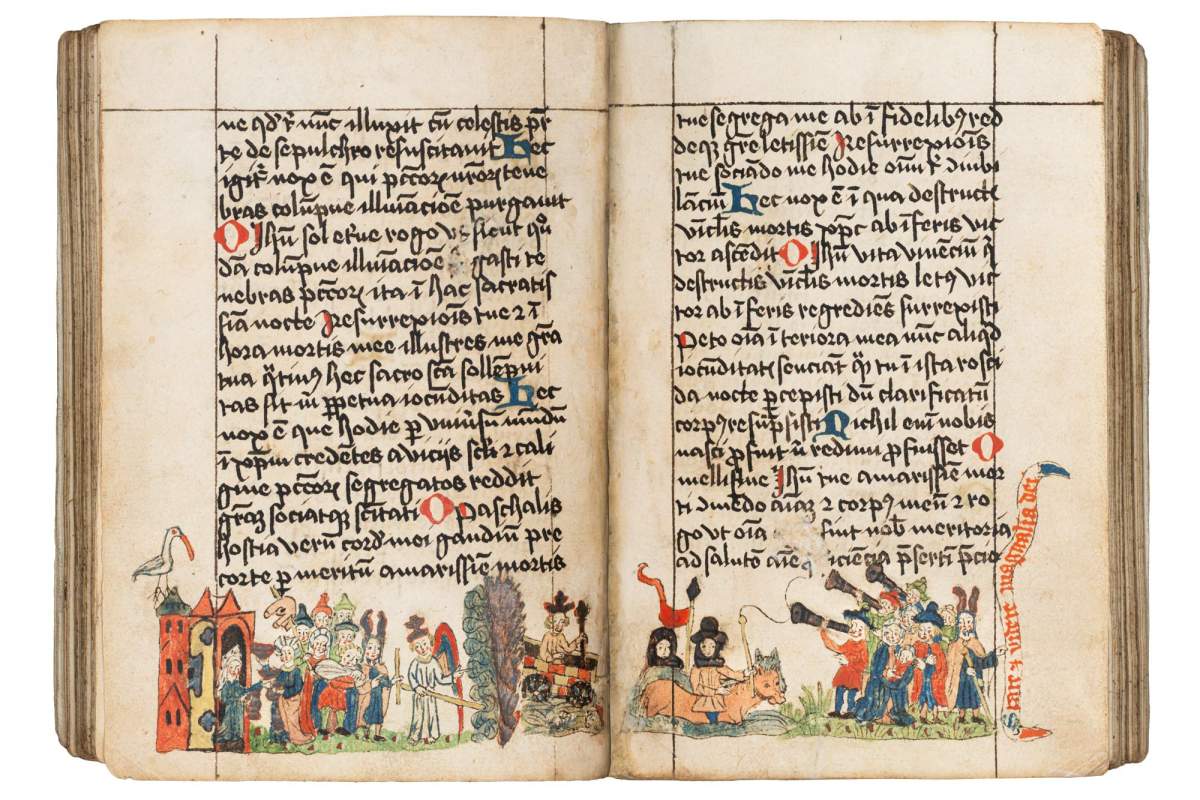
-
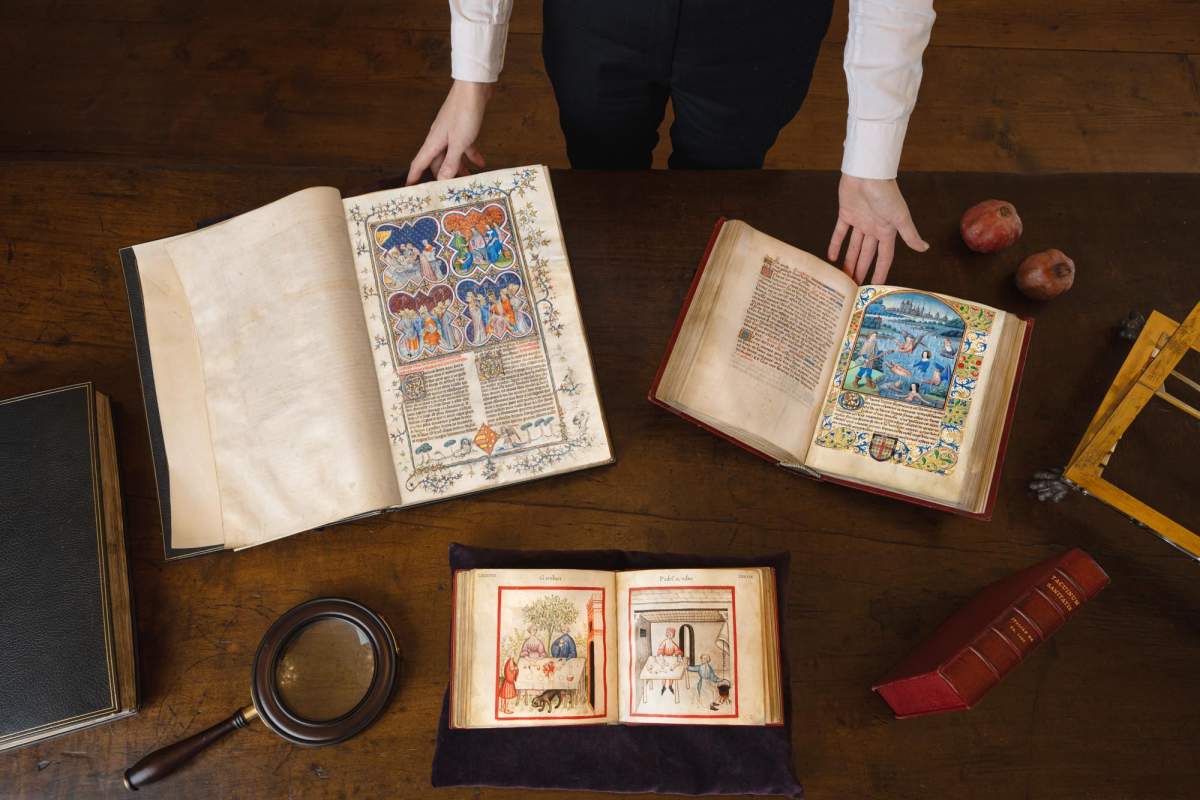 Dr. Jörn Günther Rare Books returns to TEFAF this year with a splendid selection of precious manuscripts and rare books. Our highlights this year are three outstanding manuscripts that convey the breadth and beauty of medieval manuscript illumination and carry prime historical significance, making this a truly splendid selection.
Dr. Jörn Günther Rare Books returns to TEFAF this year with a splendid selection of precious manuscripts and rare books. Our highlights this year are three outstanding manuscripts that convey the breadth and beauty of medieval manuscript illumination and carry prime historical significance, making this a truly splendid selection. -
A Star over Basel
City of Culture and Historical Treasures
Since the 5th century B.C., the area at the bend of the Rhine, on which the city of Basel now stands, has been inhabited. First by Kelts, but not much later, the Romans discovered the lovely and strategically beneficial spot. The actual name of the city Basilia was first mentioned in the 4th century. In our blog post, however, we will focus on another time, namely 15th century, when Basel became a European centre of book art. When we look at the festive lights around the hill of the cathedral and the Christmas market on Barfüsserplatz, it is not difficult to picture ourselves in the epoch of faith, hope, and - alas - unfathomable fears: the late Middle Ages.
-
Popes, Conversos, and the Eternal City
Cardinal Juan de Torquemada (1388–1468)
In our newest blogpost, Oxford Dphil. cand. Eduardo Benítez-Inglott y Ballesteros, discusses the author of the Meditationes seu contemplationes devotissimae, Cardinal Juan de Torquemada. One of the most outspoken papal apologists at the height of the ecumenical councils of the early fifteenth century, he also advocated for the rights of Jewish converts in the Spanish Crown of Castile. We are delighted to be able to offer the first edition of the Meditationes seu contemplationes devotissimae using metalcuts, printed in Mainz by Johann Numeister .
-
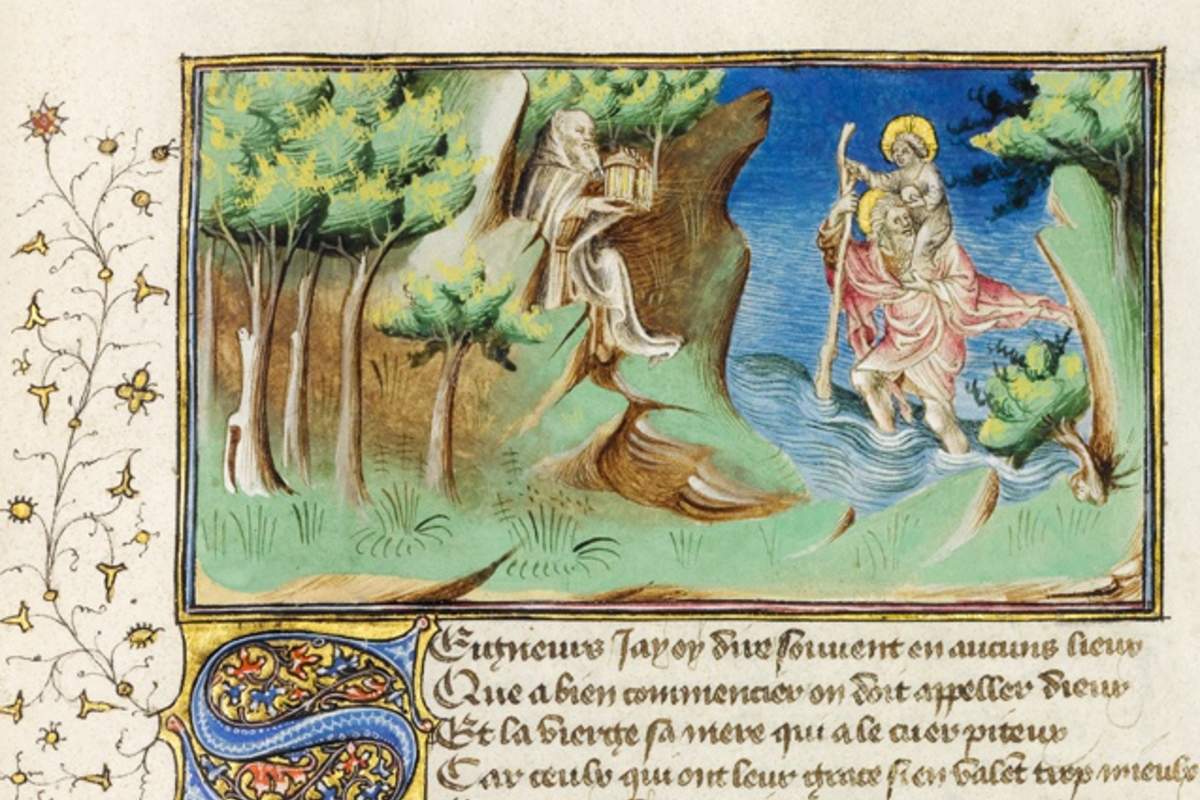
This fascinating narrative Bible was illumianted by the Master of the Berry Apocalypse in Paris around 1416. In three parts, Dr Sara Öberg Strådal introduces this stunning book and the artist, the book itself, and the stories within.
This stunning manuscript will be on display at our stand B-15 at the New York Book Fair.
-
Videos of a unique Book of Hours
This manuscript illuminated by the Master of Francois de Rohan is now sold.
This beautiful manuscript is the work of the Master of Francois de Rohan and one other artist. In this first of three videos, Dr Ina Nettekoven introduces this wonderful little prayerbook which was produced in Paris for the English market in the first half of the 16th century. This fantastic book was on display at our stand at TEFAF Maastricht, in March, but is now sold to a private collector.
-
Videos on a very special Psalter
Three videos focusing on different aspects of a Psalter by the Franciscan Master
In the first of three videos, Dr Sara Öberg Strådal introduces this enchanting little Psalter illuminated by the Franciscan Master of Bruges in the middle of the 13th century.
-
The Post-Gutenberg Era
Early Printed Bibles in German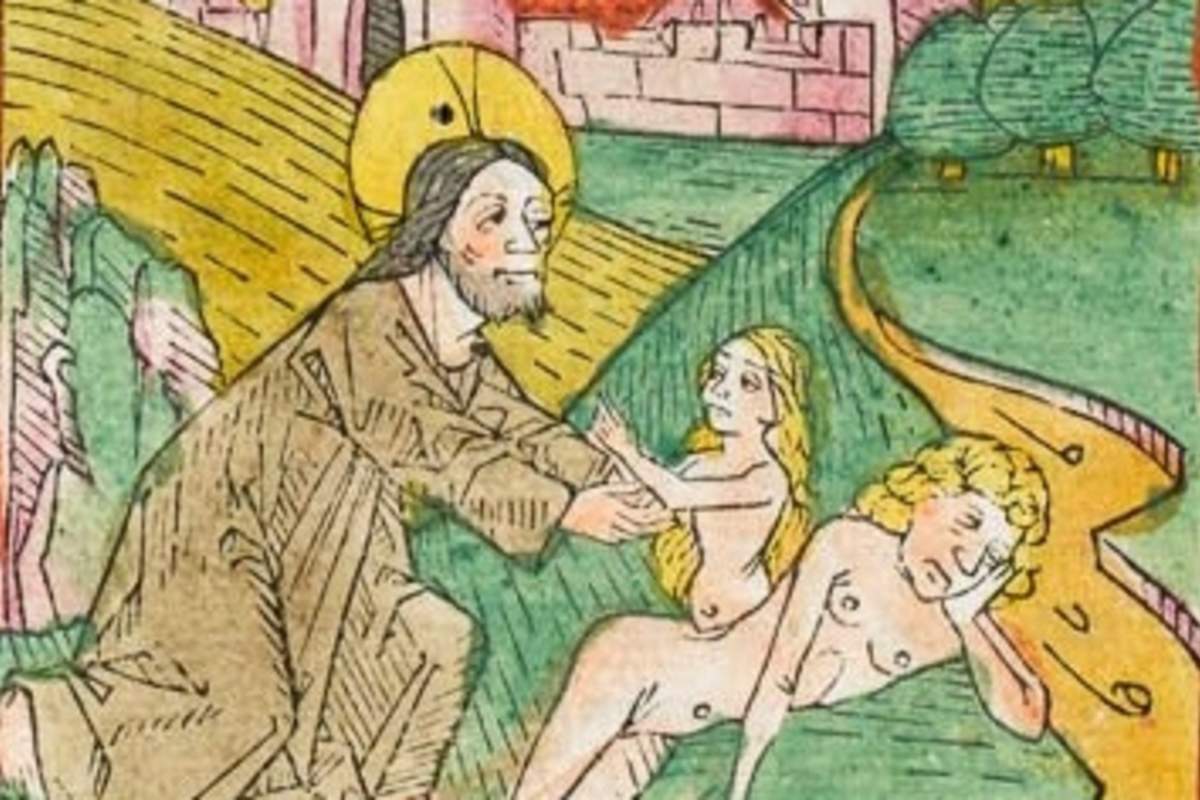 Creation of Eve from Pflanzmann's German Bible of 1475-77
Creation of Eve from Pflanzmann's German Bible of 1475-77The first book to be printed with movable type printing was a Bible - the Book of Books. Around 1454/55, Johannes Gutenberg from Mainz set about the daunting task of printing a Bible with 324 pages in folio format. Gutenberg's Bible was printed in Latin. Not long after his first printing adventure, other printed Bibles followed in Latin and in German.
Obviously, public demand was great.
-
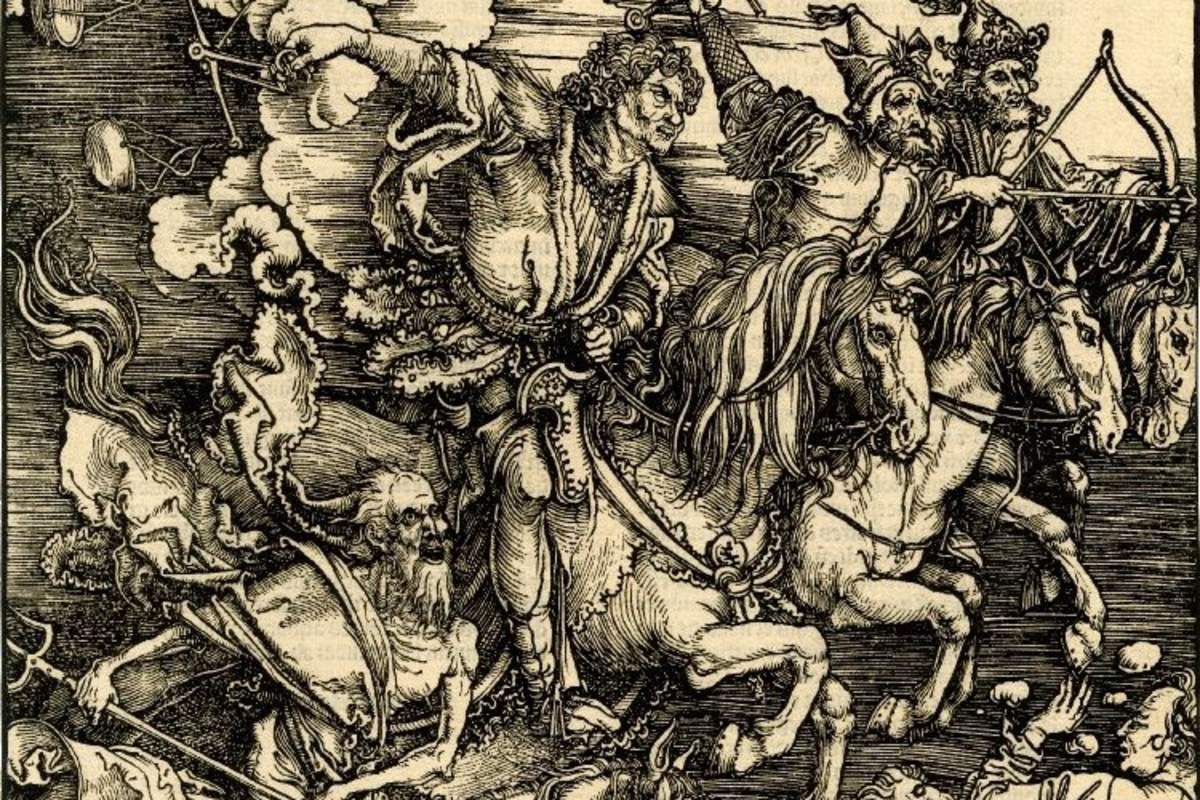
-

-

After expanding from London to include fairs in both New York and Los Angeles, the first ever Frieze Art Fair in Asia is due to open Seoul in September.. This contemporary art fair will present some of the most impressive and groundbreaking art produced across the globe. Similar to Frieze London, which is accompanied by Frieze Masters showcasing the history of art from which contemporary artists have developed and with which they remain in dialogue, Frieze Seoul also includes a smaller Masters section. Alongside the impressive repertoire of contemporary pieces, 18 galleries will exhibit historic works of art. One of these galleries is Dr Jörn Günther Rare Books. -
Sales to the Metropolitan Museum of Art Continue to Inspire
Two manuscripts sold by JGRB to the New York Institution are examples of a continued fascination with manuscript art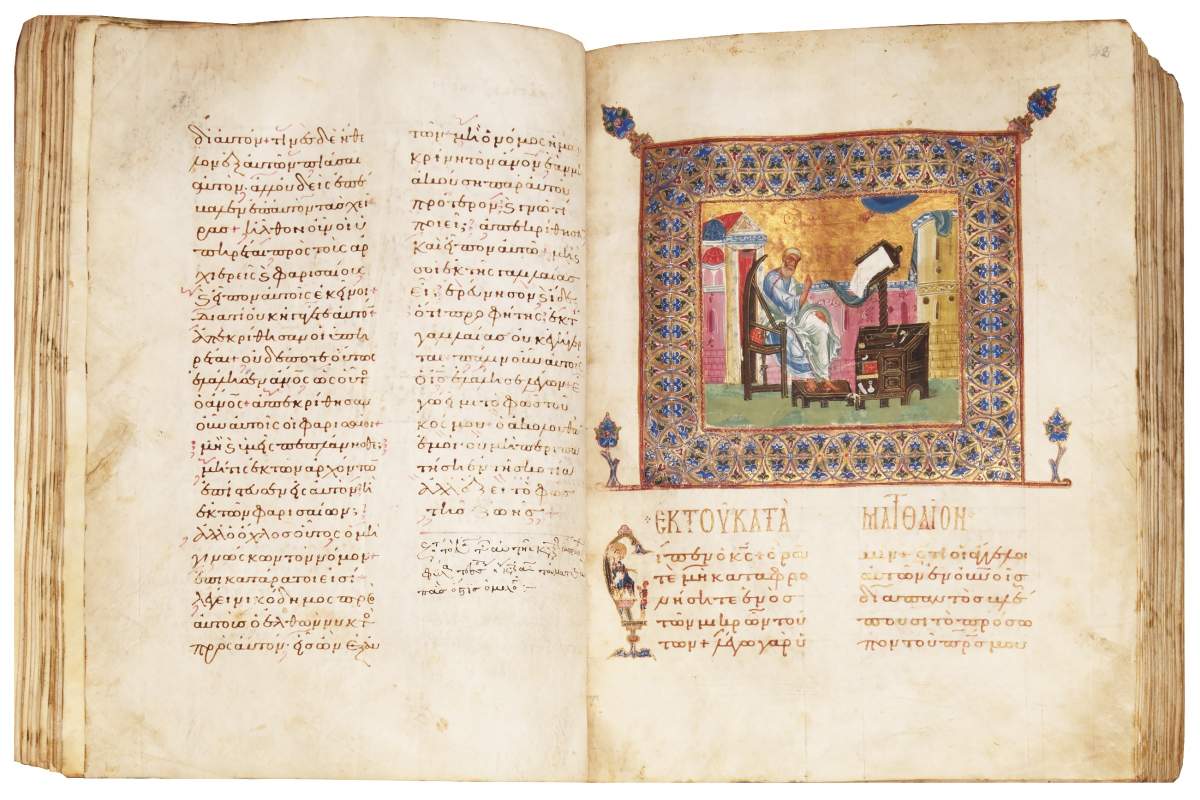
Two manuscripts sold by JGRB to the New York Institution are examples of a continued fascination with manuscript art.
-
The Life of a Manuscript
The Collection History of a Book of Hours, use of Sarum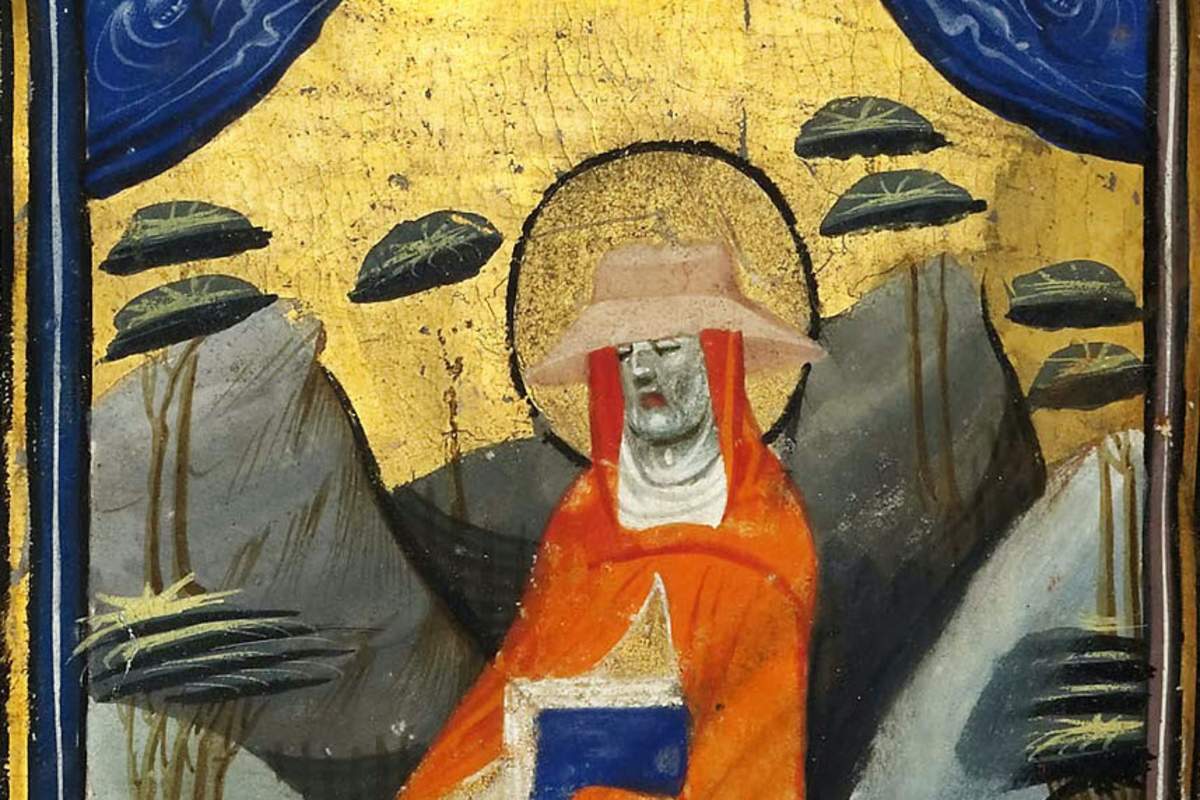
Continuing our series exploring the life of a particular object, we look at the history of this Book of Hours, Use of Sarum (Bruges, c. 1430), illuminated by the Masters of Otto van Moerdrecht. This elaborate prayer book has a fascinating history, having moved in the circles of politically and socially important collectors.
-
The Life of a Miniature
A new blog series focusing on an item's collection history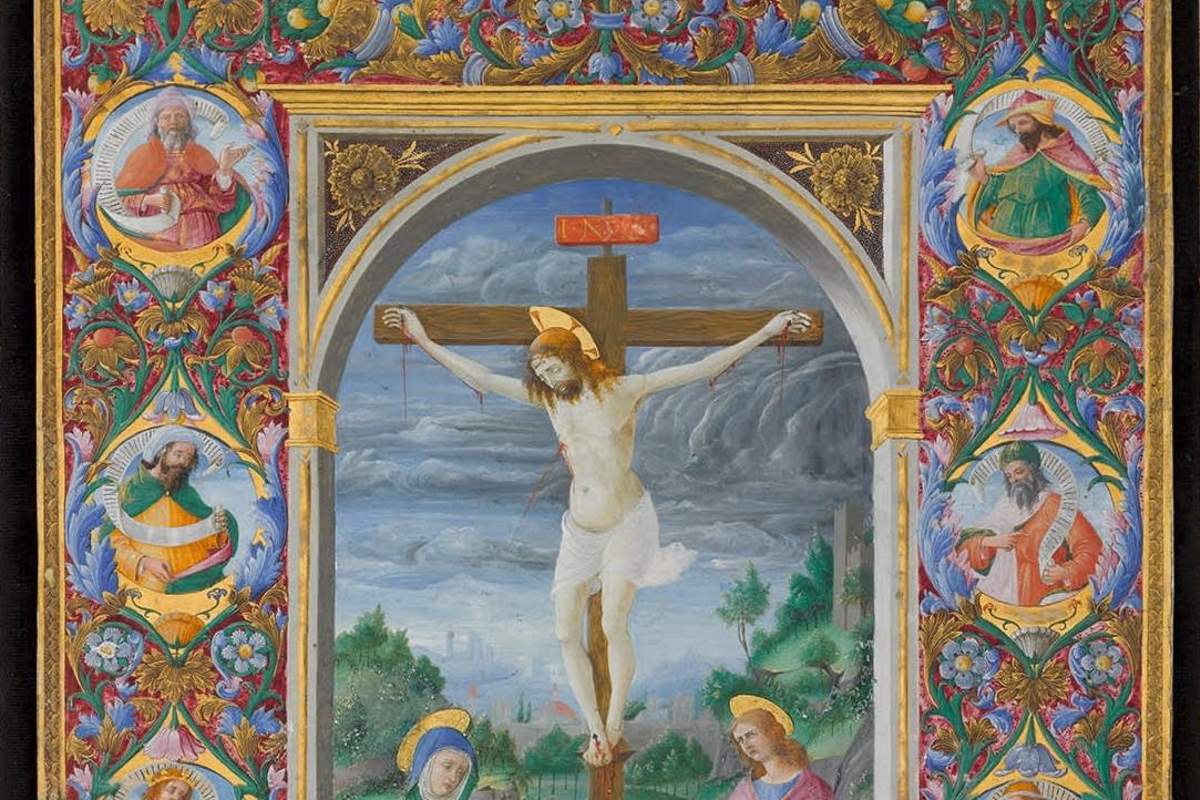
A new blog series focusing on an item's ownership history.
The Life of a… series will focus on a particular item, the hands it has passed through and the eras it has survived. When viewed alone, it is easy to become caught up in a manuscript’s beauty, as well as its many intricacies, but it is worth remembering that all of the objects that survive from the Middle Ages and Renaissance have endured a great deal of history. -
Frequently Asked Questions
Q & A on Manuscripts, Miniatures, and Early Printed Books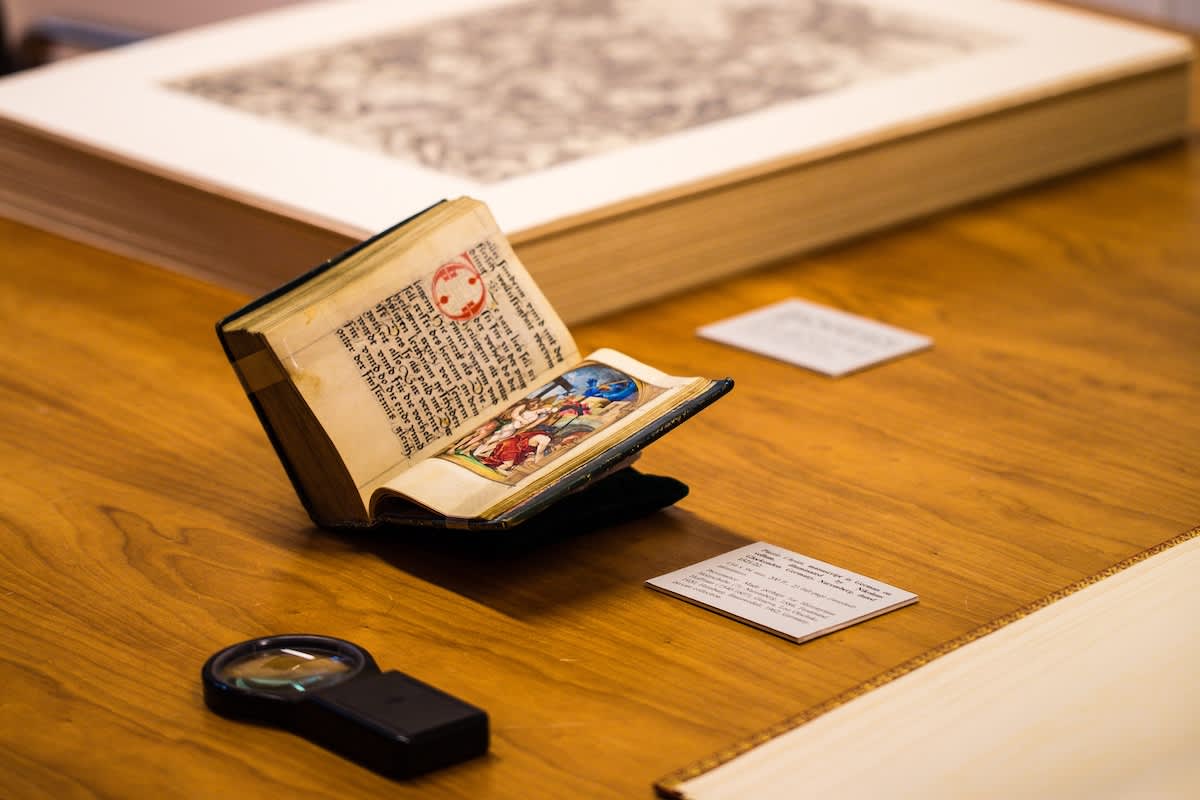
Questions we get asked most frequently include the following:
How do rare books, manuscripts, and miniatures fit into the field of art and antique collecting?
What are some of the most common misconceptions about the world of rare books and manuscripts?
How do collectors live with these objects? Given the age of some of these works, how careful do owners have to be in interacting with and maintaining them?
-
Impressive script
Inspirational and lasting examples going back to Roman days
The script that we use in the West – as well as many other things – goes back to Roman times where we can find the inspirational and lasting examples. By the first century CE, when most of western Europe was part of the Roman Empire, the authorities had widely adopted the use of Latin. At the time, the Roman Latin alphabet and script gave us imperial capitals carved in stone, rustic capitals painted on walls, and cursive script handled for daily writing. From this cursive script, uncial lettering developed that showed disconnected, capital letters without word separation. In the 4th century, when Roman power collapsed, and the Christian faith had been adopted, the art of writing became more and more confined to the monasteries. In the monastic environment, scripts developed local peculiarities and transformed into writing that often became difficult to read outside the immediate context. Thus, writing abilities diminished and texts deteriorated to such extent that by the middle of the 8th century, the call for standardization and readable texts could no longer be ignored. In order to be able to establish reforms, Charlemagne (742-814) requested scholars to develop a new script. Around 780, the scholar Alcuin of York designed what is known as the ‘Carolingian minuscule’, a script that soon became the standard in Charlemagne's empire.
-
An astonishingly fine Bible
Challenging images for a exigent commissioner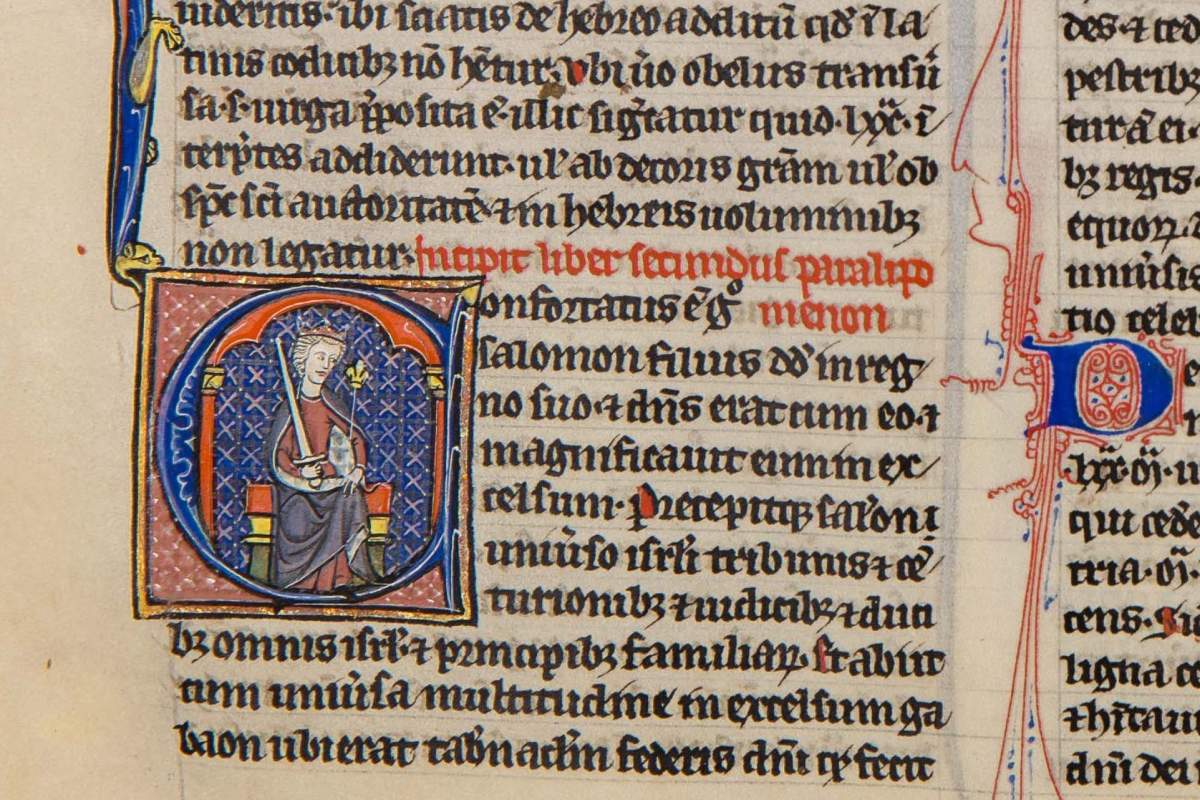
During the first half of the 13th century, Blanche of Castile (d. 1252), queen and queen mother of France, often resided in Paris. Her patronage of illuminated manuscripts was extensive and refined, for which she is called “the first important royal patron of the thirteenth century”. In overseeing the education of her children she exhibited a compelling concern for their spiritual welfare. Of the six of her children who survived childhood, Louis IX and Isabelle of France, reached sainthood. Her dedication as a mother and educator is recorded in various works of art. Presumably, the famous manuscripts of the Bible Moralisée were produced for the French royal family under her patronage. These were quite innovative works with a didactic function. As Queen of France and twice regent (the second time when Louis IX was on crusade, 1248-1254), it was through her extensive patronage of art that Blanche had lasting effect. The queen is also considered to have been patron to the design of the Sainte-Chapelle (1238-1248). In that royal chapel as well as in manuscript illumination, the fleur-de-lys symbol is omni-present.
In the illuminations in our Parisian Bible (illuminated by an artist of the Royal Psalter Group), royal power is expressed in the fleur-de-lys at King Solomon (f. 139v), at Cyrus king of Persia ordering the building of the Temple (f. 152r), and in the image of King Artaxerxes (f. 155r).
-
Distinguished Patrons
Duyst van Voorhout, founders of a dynasty Arms Duyst van Voorhout
Arms Duyst van VoorhoutNot often, unknown Dutch manuscripts turn up that can be identified by the coats of arms of their noble patrons. A remarkable Book of Hours made in Delft, contains, on three pages, the coats of arms of Hendrick Nagel van Voorhout and Immesoet Duyst. Both husband and wife descend from old Delft families going back to the early 14th century. They are known as brewers, church master, aldermen, and burgomaster. Hendrick and Immesoet count as the founders of the Duyst van Voorhout family.





